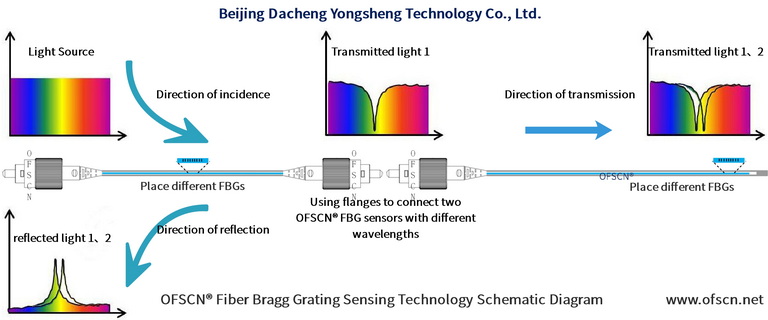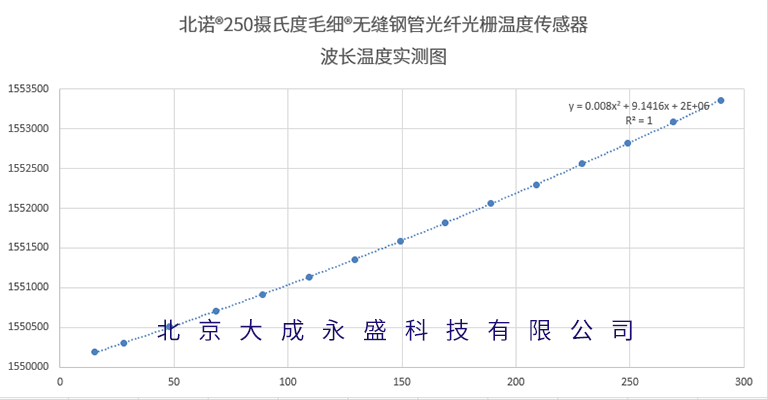This article introduces the temperature compensation methods and principles for fiber Bragg grating (FBG) strain sensors, addressing the question of whether FBG strain measurements are sensitive to temperature. It also highlights the accurate temperature sensing capability of OFSCN® Capillary Seamless Steel Tube Fiber Bragg Grating Temperature Sensors, which can be used for temperature compensation in FBG strain sensors as well as other types of FBG sensors. Additionally, it presents the temperature compensation scheme offered by DCYS.
1. Temperature Compensation Principle Formula and Diagram for Fiber Bragg Grating Strain Sensors
FBG is sensitive to both strain and temperature. Whether the FBG is subjected to strain or the environmental temperature changes, it causes a variation in the grating pitch (grating period), resulting in strain in the FBG sensor.
This means that when you want to perform accurate testing using FBG strain sensors, you must consider whether the environmental temperature has changed.
You need to eliminate the influence of temperature on the reflected wavelength from the formula ΔλB = λB(1 - Pe)Δε + λB(αf - ξ)ΔT. In other words, you need to make ΔT = 0 or have a known value for ΔT. This process is called temperature compensation for FBG strain sensors.
 |
| Figure 1 |
The best method for temperature compensation of FBG strain sensors is to place an accurately temperature-sensing FBG temperature sensor in the measured object or environment. This sensor can be connected in series or in parallel to the system.
Since the FBG strain sensor and the FBG temperature sensor are in the same temperature environment, the temperature measured by the FBG temperature sensor can be considered as the temperature of the FBG strain sensor. At this point, the temperature's influence on the reflected wavelength can be subtracted from the formula ΔλB = λB(1 - Pe)Δε + λB(αf - ξ)ΔT, thereby obtaining an accurate strain value.
2. Physical Diagram and Calibration of FBG Strain Sensor Temperature Compensation Products
 |
| Figure 2 |
 |
|
Figure 3 |
 |
|
Figure 4 |
OFSCN® Capillary Seamless Steel Tube Fiber Bragg Grating Temperature Sensors, developed by DCYS, adopt unique patented technology. They have the advantages of small size and dimensions, allowing minimal impact on the measured object when placed in the environment. Moreover, they provide accurate temperature measurements.
 |
|
Figure 5 |
Our philosophy is: "OFSCN®, make optical fiber stronger!"
